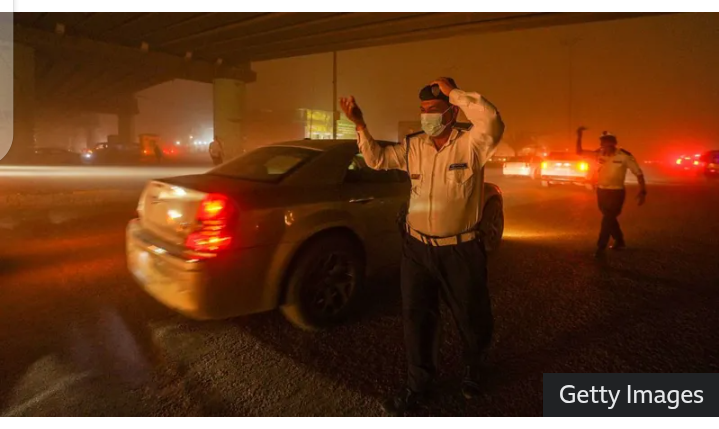Thousands Require Treatment As Severe Sandstorm Sweeps Across Iraq.
More than 1,000 people have been left struggling with respiratory problems after a powerful sandstorm swept through central and southern Iraq, according to health officials.
Hospitals across the affected regions were overwhelmed with cases of breathing difficulties, with Muthanna province alone reporting at least 700 cases of suffocation, a local official told the AFP news agency.

The storm, which descended on 14 April, cloaked cities in a thick orange haze, severely reducing visibility to less than one kilometre. Footage shared online showed streets and highways blanketed in dust, with headlights barely piercing through the dense air. Pedestrians and police officers were seen wearing face masks, while paramedics assisted residents suffering from respiratory distress.
In Najaf province, over 250 individuals were taken to hospital, while Diwaniyah province recorded at least 322 cases, including children. Health authorities in Dhi Qar and Basra provinces reported a further 530 people needing treatment for breathing issues.
The extreme weather also caused major disruptions to infrastructure. Airports in Najaf and Basra were temporarily shut down due to poor visibility, while power outages were reported in several areas.
Iraq’s environment ministry has issued fresh warnings, stating that the country will face an increase in “dust days” in the coming years. Dust storms are not uncommon in Iraq, but environmental experts say they are becoming more frequent and intense, attributing the trend to the ongoing effects of climate change.
The United Nations lists Iraq among the five countries most vulnerable to climate change, citing rising temperatures, water scarcity, and more frequent sandstorms as critical challenges.
This week’s storm is reminiscent of a similar event in 2022, which left one person dead and more than 5,000 people in need of medical care for respiratory ailments.
Local weather services expect the conditions to begin easing by Tuesday morning, but authorities continue to advise residents to remain indoors and use protective gear if going outside is necessary.


